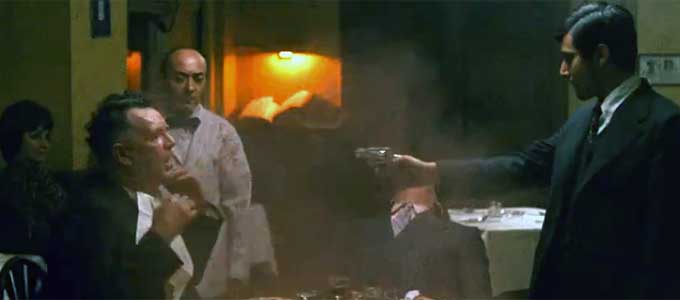This page may contain one or more affiliate links, which means that if you purchase a product through that link, I may receive compensation. The links will be identified with the text "affiliate link". Click to learn more.
If you are a fan of the Godfather films, then you already know where this article is headed. The Godfather was a movie written by Mario Puzo and directed by Francis Ford Coppola. Its historical significance has caused it to be preserved by the National Film Registry. It had won three Oscars and is considered one of the best movies of all time.
But is it as good as everyone says it is? What is The Godfather about?
Set in the world of organized crime, it tells the story of the Corleones, a powerful Mafia family. Vito Corleone tries to pass his empire on to his reluctant son, Michael, after an assassination attempt leaves him clinging to life. As Michael learns how to navigate this dangerous world, he is forced to make tough choices that ultimately transform him into a ruthless leader. To explain further, Michael’s transformation is a central theme of the film. At first, he is an outsider to the world of organized crime, but as he becomes embroiled in the family business, he begins to understand the harsh realities of their lifestyle. With each decision he makes, Michael becomes more hardened and less hesitant to use violence as a means of achieving his goals. By the end of the film, he has fully embraced his role as the leader of the Corleone family, and it is left to the viewer to decide whether his actions were justified or not.
If you love gangster movies, yes, it’s as good as everyone says. It is a fun movie to watch for many reasons. However, it does have its faults. The movie is almost three hours long. I realize that recently it had become normal for movies to become three, even close to four hours long. However, I am a believer that a movie should be capped at two hours, or things begin to become tiresome. The Godfather is no different. The movie is great, but after a while you need a bathroom break and begin thinking about other things you need to do, like actually go to work and not just sit around watching movies all day.
Another thing I want to mention in this Godfather review is that it is violent at some points. Yes, I know, it’s a gangster movie. However, how much blood is in The Godfather Part 2? Very little, and there are no scenes of people being beaten half to death. In The first Godfather movie (the one this article is talking about) there is a scene where a man wakes up in a bed full of blood, and it’s within the first half hour. So yeah, the Godfather is pretty violent.
As always though, the good comes with the bad, and believe me, there is plenty of good! The Godfather locks you in, from beginning to end. The movie begins and ends the same way, with the leader of the crime organization having someone kiss his ring, as a sign of respect. There are a lot of twists and turns, as you see the characters evolve. If you were to watch the Godfather movie, you would see firsthand what a masterpiece this is. Which, of course, I recommend doing wholeheartedly. I recommend the Coppola restoration (affiliate link) which a crisper copy than I remember in my youth. Be sure to add this masterpiece to your watch list.

